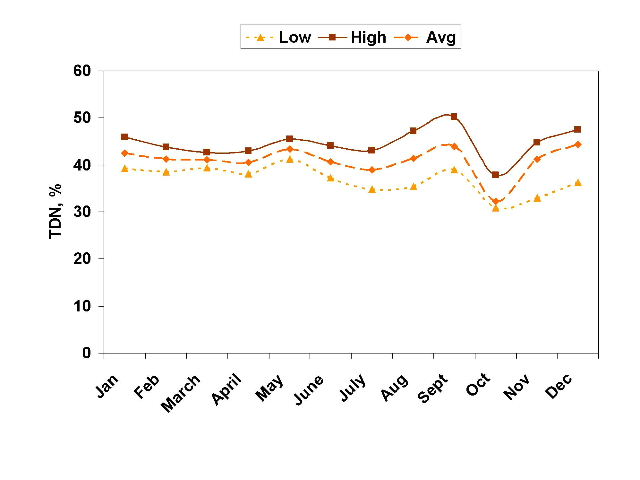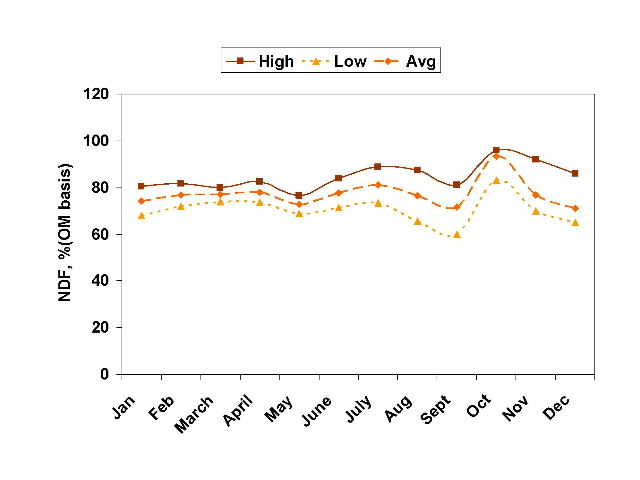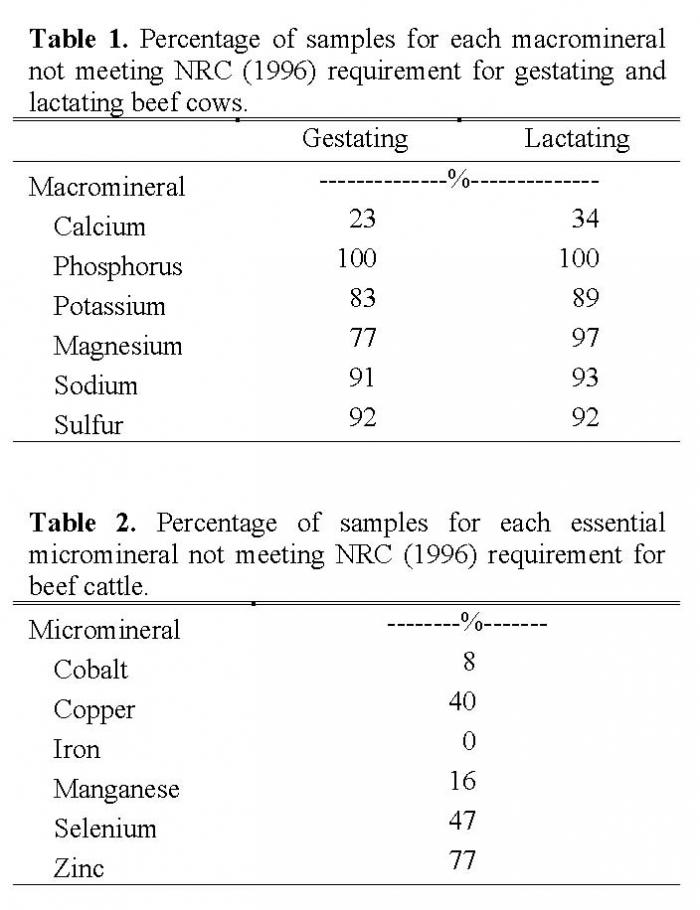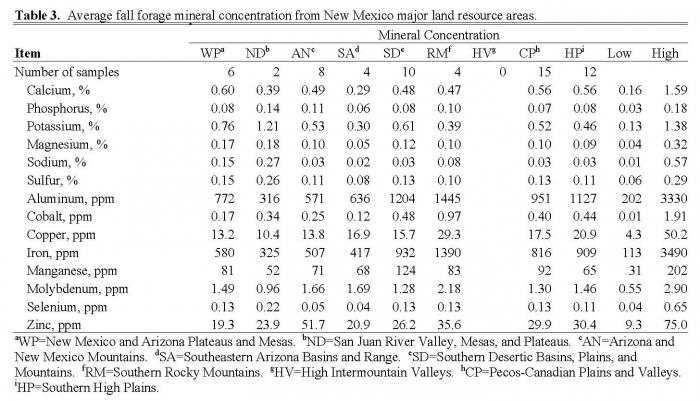Previous Research Resources
For Wildlife Managers
Mule Deer
Sightability Model for Elk & Mule Deer
Understanding mule deer behavior and habitat should increase our success mule deer management. Information on mule deer is limited due to difficulties and expense of research. Below is a list of information and publications that are available.
General Information
-
Burning for Big Game (PDF)(NMSU Ext Pub CR-657)
-
Mule Deer (PDF)In New Mexico (NMSU Ext Pub L-301)
-
Basics of Trophy Management (PDF)(NMSU Ext Pub L-111)
-
Survival and Cause- Specific MortalityOf Neonatal Mule Deer Fawns North-Central New Mexico (PDF). (J. Wildlife Mgt. 71:881)
For Livestock Producers
Club and Market Goats
SAMM Cross Lambs
CRLRC SAMMX Breeding Program
The Corona Range and Livestock Research Center (CRLC) began investigating the possibility of crossbreeding the SAMM (South African Meat Marino) with our traditional Western Whiteface flock on the ranch in 2006. During the winters of 2007 and 2008, a select few ewes were Alfed to Prime SAMM semen originating in Australia.
In 2009, an additional select few ewes were mated to half-SAMM bucks from prior All. Late Fall of 2009, two full SAMM rams were purchased from Kitzan's in South Dakota to diversify CRLRC SAMM genetics, CRLRC SAMM crosses are entirely range born and reared. Due to serve drought across the southwest only a small group of SAMM cross lambs have been performance tested to date.
Twenty-two 1/4 SAMM and Ten commercial Rambouillet rams were retained during our 2013 weaning held on range through January, then developed on a 84 day dry-lot performance test, then native pasture from April until now. These rams are available now for purchase at the ranch now through fall.
Shad Cox
P.O. Box 392
Corona, NM 88318
Phone: 575-849-1015
Cell: 575-799-3569
Fax: 575-849-1021
Email:
shadcox@nmsu.edu
URL:
https://coronasc.nmsu.edu
Forage Analysis
CRLRC Forage Analysis Results
18 Year Summary of Diet Sampling Analysis
- New Mexico Forage Mineral Survey (2004)
- 18 Year Summary of Diet Sampling Analysis
- CRLRC Forage Analysis Results
Forage analysis is an integral part of a range nutrition program. Knowing what your cows are getting from grazing the range helps to develop your supplementation program. Ranchers can take forage samples from pastures at different seasons and send to a lab for analysis of all nutritional parameters and mineral content of the sample. The CRLRC sends forage samples throughout the year for analysis for reference. Additionally, the ranch has the capability to utilize ruminally cannulated cows and heifers to take an actual diet sample from the animal. A rumen cannula is a surgically applied access port into the stomach of the cow. We remove all of the rumen content from each cow, then allow them to graze for a period of time, then take the forage that the cow grazed during the time as a representative sample in time, and finally we add back all of the rumen content we removed so that the cow is not effected by the procedure. This is the best sample that can be taken from the range because the cow actually sampled the range for us. A forage sample is just your or my guess at what the cow may eat and may not be what the cow picks. An interesting note, we have taken dozens of samples of dormant range that we could not see any green forage, however when the cow is sampled they always have located green feed that we would not have sampled if taking the forage sample ourselves.
Below are graphs representing the summary of 18 years of diet sample analysis by month of the year. Each graph represents the highest, lowest and average results obtained during analysis of diet samples.



New Mexico Forage Mineral Survey (2004)
An extensive forage mineral study was published by Clay Mathis and Jason Sawyer in 2004. The intent of the study was to quantify amounts of measured minerals and differences within the state of New Mexico. The published manuscript is available below, as well as, I have included the published tables below for quick reference.



Livestock Water Analysis
Livestock water is an important component of any nutritional program. Until you know what is in the water that your cattle or sheep are drinking everyday, you do not have a true handle on your supplemental nutrition program.
Here in Central NM we have enough salt in our water that we really do not need to supplement with plain salt. We still use salt in our cubes and mineral, but basically for increasing consumption of both (palatability) and with higher rates we can also limit consumption of our loose mineral to control intake to appropriate levels. Further problems caused by our water is the high total disolved solids (TDS), that along with other high mineral content in the water, increases our risk of water belly (urinary calculi). We have to add ammonium chloride to our mineral if we over-winter steer calves, and we know this by looking at the water analysis, and from prior experience of water belly in steers on the ranch and others in the area. Further note, is a high sulphur content in our water. With an increase in use of higher sulphur containing alternative feed byproducts in cubes and rations, the stage may be set for instances of Polio-encephalomyelitis. I have seen two instances this year, one on the ranch and the other at a ranch to the north. High sulphur consumption can disturb thiamin metabolism causing a disturbance in the brain, leading to blindness, lethargic reactions, aimless walking, head pressing, etc. and eventually death. These are just a few reactions with water intake that come to mind that can be identified by analyzing water on the ranch.
Testing Water Sources
It is a great idea to have your water sources tested. This can be done in a number of ways, however the easiest would be to contact your county agent. They will be able to provide you with all the information and probably give you a testing kit. Also, when analysis is complete they have all the resources available to give you the proper results with indications of any concerns that might be present with the results.
Most of us have taken water samples at wells or the end of a garden hose off of the house well, however one source that may not come to mind would be storage tanks that have set all season without use, we just keep filling them up for the deer pronghorn. Evaporation during a season of little use will concentrate most minerals two and three fold. This could possibly cause a toxic event when turning livestock onto the water for the first time after setting and evaporating for a time. I have starting thinking back to the few instances where I blamed a poisonous plant for a death after moving to new pasture, but know I wonder if concentrated minerals, such as sulphur, was the culprit. If you know you have a high level of some mineral, testing the storage for concentrated levels might be a good idea, or flushing the tank and refilling would also be a good idea.
General Information
-
Water Quality for Livestock and PoultryA great resource to reference after you receive your test results.
CRLRC Well Water Analysis

Mineral
Mineral Nutrition & Supplementation
Mineral nutrition can be complex. Consumption of mineral is the sum of vegetation, soil, water and supplement intake. Concentration of minerals in the diet and diet requirements fluctuates throughout the year. Designing a simple, yet easy to manage mineral program that succeeds may involve on the ranch testing for a couple of years. The form of ALL of these factors add to the challenges in formulating an effective mineral supplement.
Mineral Supplementation

-
New Mexico Forage Mineral Survey (PDF)
An extensive statewide forage mineral study published by Clay Mathis and Jason Sawyer in 2004. The intent of the study was to quantify amounts of measured minerals and differences within the state of New Mexico.
Supplementation
Range Beef Cow Supplementation Information & Strategies
Range beef cattle production depends on the nutritional quality and quantity of available forage species. Winter and early spring months typically provide the least availability of high quality or nutritionally dense forage. During this time period on most operations, cows are expected to provide nutrients to the developing fetus during pregnancy, produce milk for a new calf after calving, and maintain or increase her physiological status during the postpartum period in order to conceive for the next production cycle.
Ongoing research projects are designed to profile the nutritional physiology involved in range beef cattle production, as well as developing new feeds and feeding strategies to supplement cattle during times of nutritional stress at an economical advantage. Currently there are four areas of special interest: Replacement heifer development, young cow post-partum supplementation, mature cow supplementation alternatives, and weaned calf management strategies.
Below are links to published general information, as well as, result driven publications derived from 20 years of research conducted on the Corona Range and Livestock Research Center.
Range Beef Cow Nutrition
General Information
-
Beef Cow Efficiency in the SouthwestA discussion for matching cow type to forage production. (NMSU CES Guide B-217, March 2000)
-
Supplement Delivery SystemsA guide to options in supplementing range beef cows for efficiency and economy. (NMSU CES Circular 571, August 2001)
-
Beef Cow Supplement Decision Guide
A great yes/no decision tree in a flowchart format. With three questions this guide can help assist in your decision to start or continue with supplementation and gives suggestions as to what level of protein and what rate fed. (Courtesy of Dr. Clay Mathis, NMSU Extension Livestock Specialist)
Weaning Range Beef Calves In the Southwest
The fall of the year is the most important period of the year financially for the Southwest rancher. Many decisions have to be made concerning the years calf crop and how to market, vaccinate, wean and ship these calves. Below are sources of information from the CRLRC, as well as, other sources.
Weaning Beef Calves
-
Minimizing Weaning Stress on CalvesAn excellent explanation of weaning stress and solutions to minimizing stress. Data from CRLRC fenceline weaning program. (NMSU CES Guide B-221, June 2008)
General Information
-
Use of Groth Implants in Suckling Beef CalvesAn excellent explanation of the use and potential impact in value when using growth implants on calves. (NMSU CES Guide B-218, July 2000)
-
Cattle Vaccination and ImmunityAn explanation of how vaccines work and why cattle still get sick. (NMSU CES Guide B-222, September 2008)
-
Calf Vaccination GuidelinesA current guideline for calf vaccinations. (NMSU CES Guide B-223, January 2009)
Herd Health
Herd health is an important program area for the ranch to maintain. Below is information regarding health as related to the Southwest rancher.
The CRLRC Health Management Strategy
Below are the CRLRC Yearly Health Schedules for cow, replacement heifers, bulls and calves. These are working documents have have changed each year in the last eight years. These are by no means a cure all to health problems in your herd. They are only available for reference because of requests from producers in the state. Our schedule has been built to fit into our working days to minimize labor and time, while increasing our risk management. They have been developed by our veterinarian's based on our needs and perceived risks of exposure. Please consult your veterinarian to insure that your program is the best fit for your scenario and that no complications arise. (Using a live or modified live viral vaccine has risks of pregnancy complications if not timed correctly during the first administration). Please feel free to contact the CRLRC if you have any questions about our program.
General Information
-
Preventing Persistent InfectionsOf Bovine Viral Diarrhea Virus in Beef Cow Herds. A great resource for understanding, identifying and eliminating PI-BVD cattle from your operations.
-
Subcutaneous Injection Knots
We have all seen our cows and calves with unsightly knots on there necks from 7-way (blackleg) vaccination and many have tried to use this excuse for a lower price. A study has shown that these knots may indicate better immunity and resistance. (Aggie Notes Column, NMSU)
-
Cattle Vaccinations and ImmunityAn explanation of how vaccines work and why cattle still get sick. (NMSU CES Guide B-222, September 2008)
-
Calf Vaccination GuidelinesA current guide to calf vaccination needs. (NMSU CES Guide B-223, January 2009)
-
Cow Herd Vaccination GuidelinesA current guideline to vaccinating cows, replacement heifers and bulls. (NMSU CES Guide B-224, January 2009)
Toxic Plants
Poisonous plants continuously cause lowered production and/or cause death to livestock grazing New Mexico rangelands each year. Below are links to information available for producers that might help identify the cause and help gather information to ease the burden while managing through times of toxic episodes.
Plant Identification
-
Livestock Poisoning Plants of New Mexico RangelandsAn excellent publication to identify the most common toxic plants on New Mexico Rangelands. Lots of general information on poisoning and more specific information for each individual plant. (NMSU CES Circular 531)
-
NMSU Online Weed DatabaseA great online resource for identifying weeds or finding information on individual weed species.
-
NRCS Plants DatabaseThe most comprehensive online resource for information on individual plants by common or scientific name.
-
NMSU Range Science HerbariumThe NMSU Department of Animal and Range Sciences maintains a range plant herbarium in Knox Hall on the main campus. The website maintained by the herbarium has useful information and publications, many in downloadable format.
Specific Plant Publications
-
Groundsels and Livestock PoisoningsInformation on Groundsel (Senecio ssp.) poisoning. (NMSU CES Guide B-113, April 2003)
-
Rayless Goldenrod and Livestock PoisoningsInformation on Rayless Goldenrod poisoning. (NMSU CES Guide B-114, January 1996)
-
Nitrate Poisoning of LivestockInformation on Nitrate poisoning of livestock. (NMSU CES Guide B-807, January 1998)
-
Prussic Acid Poisoning in LivestockInformation on Prussic Acid poisoning of livestock. (NMSU CES Guide B-808, November 2002)
Sheep Production and Management

CRLRC Research
-
Improving New Mexico Sheep Industry: Can SAMM's Help?An update on a continuing effort to study the effects of crossbreeding range ewes to the South African Meat Marino.
-
Reproductive Wastage in Western White-Face Range EwesAn update on a 3 year study investigating lamb losses from conception to weaning.
General Information
-
Guide for Control of External Parasites of Goats and SheepAn excellent guide to treatment for external parasites. This guide is somewhat dated since being written in 1994, however most of the treatments are still relevant. (NMSU Guide B-112, July 1994)
The New Mexico Cooperative Extension Service maintains a website for Sheep Production and Management. Click on the link below to access the site.
For Rangeland Managers
Grazing Management
-
Management of Rangelands And Cattle in Drought-Prone Areas of the Southwest. A tip sheet with alternatives to consider during drought conditions. (NMSU CES Guide B-817, November 2009)
-
Strategies for Livestock ManagementIn Riparian Areas in New Mexico. A summary of options that can be implemented to manipulate riparian use. (NMSU CES Guide B-119, July 2001)
Solar Water Pumping Information
-
Designing Solar Water Pumping Systems for Livestock (Publication)A great publication explaining solar water pump considerations and equipment needed for a adequate, functional system on the ranch or homestead.(NMSU CES Circular 670)
-
Designing Solar Water Pumping Systems for Livestock (User Manual)This is the user manual for a spreadsheet program designed to assist in understanding, developing, and cost analysis of a functional solar water pumping system for livestock. This manual walks the user step by step through the use of the spreadsheet available for download below. (NMSU CES Circular 671)
-
Designing Solar Water Pumping Systems for Livestock (Workbook)This link will download an Excel workbook titled Designing Solar Water Pumping Systems for Livestock from NMSU Cooperative Extension Service. This workbook will take you step by step in designing a functional solar water pump system, showing equipment needed and estimating costs. The above user manual (NMSU CES Circular 671) is a step by step guide for this workbook.
Brush Control
Encroachment of piñon-juniper woodland and other brush species can have a detrimental effect on many facets of land management. Decreased forage production, increased erosion, lowered net income and fire hazard, to name a few. Below are links to information reported from research conducted here at the CRLRC, as well as, publications published by NMSU Cooperative Extension Service and the Agricultural Experimental Station.
-
Juniper Control: Individual Plant TreatmentsA great summary for individually treating reinvading juniper. (NMSU CES Guide B-817, December 2009)
-
Brush and Weed Control on New Mexico RangelandsInformation on what needs to be thought about while designing a custom control method on rangelands. (NMSU CES Guide B-806, July 1997)
-
Chemical Weed and Brush Control for New Mexico RangelandsA guide and herbicide recommendation publication for control of weeds and brush on rangeland. (NMSU CES Circular 597, May 2009)
-
Control Cholla CactusEffective ways of controlling Cholla on rangeland. (NMSU CES Bulletin B-804, June 1997)
-
Mesquite Control: Individual TreatmentsA brochure designed to guide effective control of mesquite. (NMSU CES Brush Busters Series BC-1)
-
Mesquite Control: Aerial ApplicationA brochure designed to guide effective control of mesquite. (NMSU CES Brush Busters Series BC-2)
Noxious Weeds
Noxious weeds seem to give us problems year after year. We have problems when we are in a drought and problems when it rains. Below are some links to publications dealing with a number of noxious weeds.
General Information
-
Troublesome Weeds of New MexicoAn excellent publication from NMSU Cooperative Extension Service with excellent pictures and information on common weeds. This is a large download of 16.31 MB, so it may take some time to download. Be sure to save for future reference to avoid further downloads.
-
Brush and Weed control on New Mexico RangelandsInformation on what needs to be thought about while designing a custom control method on rangelands. (NMSU CES Guide B-806, July 1997)
-
Chemical Weed and Brush Control for New Mexico RangelandsA guide and herbicide recommendation publication for control of weeds and brush on rangeland. (NMSU CES Circular 597, May 2009)
-
Control Perennial SnakeweedsA guide to the control and management of snakeweeds. (NMSU CES Guide B-815, March 2003)
-
Snakeweed Control: Aerial ApplicationA brochure designed to guide effective control of snakeweed. (NMSU CES Brush Busters Series BC-4)
-
Locoweed Control: Aerial Application or Ground BroadcastA brochure designed to guide effective control of locoweeds. (NMSU CES Brush Busters Series BC-5)
-
African Rue Control: Ground ApplicationsA brochure designed to guide effective control of African Rue. (NMSU CES Brush Busters Series BC-6)
Rangeland Economics
As we enter a new era in rangeland livestock production with escalating costs in all areas of production, it becomes more evident that rangeland managers and range livestock producers need new tools in evaluating operations. Below you will find information from the CRLRC as well as other meaningful information conducted or analyzed throughout the U.S.
Flora of the CRLRC
An extensive inventory of the flora found on the Corona Range and Livestock Research Center was taken in 1999 and 2000. Plant images are arranged below alphabetically by genus and species.
Related Publications

